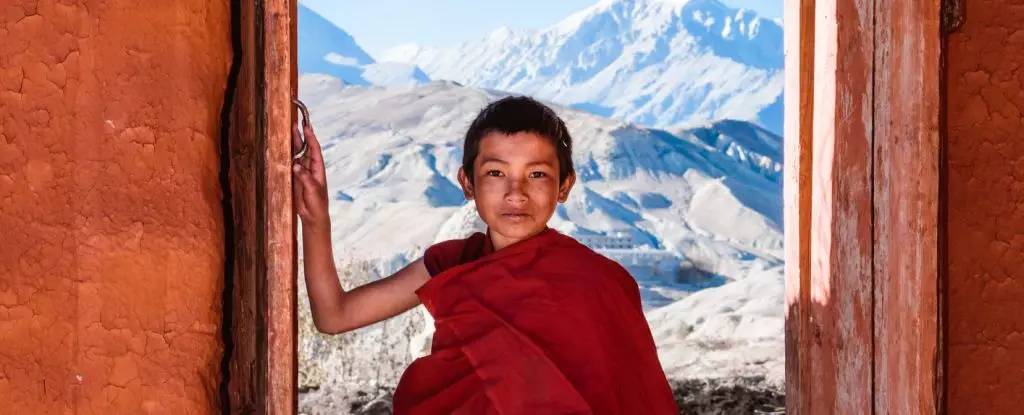Human evolution is a dynamic narrative, continually unfolding and influenced by environmental pressures. As a species, we have not reached a final destination; rather, we are still cooking. Each adaptation, from the smallest genetic mutation to significant physiological changes, serves as a testament to humanity’s resilience and ability to thrive in challenging settings. One compelling example lies in the Tibetan Plateau, a region where oxygen levels are significantly lower than at sea level. Here, determining how human beings have adapted to hypoxia reveals much about our evolutionary journey.
At high altitudes, many individuals experience altitude sickness. Symptoms can be debilitating, as the body struggles to absorb enough oxygen due to reduced atmospheric pressure. Yet, in stark contrast to their counterparts who attempt to scale mountains only to succumb to these conditions, many Tibetan communities have flourished over millennia. Their success is not mere chance; it is a narrative of adaptation finely tuned through generations of natural selection.
Scientific Insights into Tibetan Adaptations
Dr. Cynthia Beall, an anthropologist at Case Western Reserve University, has dedicated her research to understanding how these high-altitude communities navigate the challenges of low oxygen. In a recent study, Beall and her team unveiled specific adaptations among Tibetan women, focusing on their reproductive success and oxygen transportation capabilities. Such insights are essential not only for understanding these adaptations but also for recognizing their implications for human biology in extreme conditions.
The essence of evolutionary fitness, as relayed in their findings, revolves around the ability to reproduce and nurture offspring who survive to adulthood. Through her research, Beall analyzed 417 women in Nepal’s high-altitude regions, systematically examining their blood’s hemoglobin levels and oxygen saturation. Intriguingly, even among women facing the daunting challenges of low oxygen environments, those with moderate hemoglobin levels and high oxygen saturation seem to excel in bringing live births into the world. This revelation offers a more nuanced perspective on optimal physiological traits for survival under extreme conditions.
Natural Selection in Action
Natural selection often appears as a stark and linear process. However, what Beall’s research illustrates is the multifaceted nature of evolution. For instance, women in the Tibetan Plateau achieved remarkable reproductive rates without the need for excessively thickened blood, which typically complicates circulatory efficiency. Instead, those who thrived possessed an intermediary balance in their blood’s composition, allowing for an efficient yet flexible circulatory system. This sophistication highlights nature’s ingenuity, presenting a model where adaptability is key to flourishing amid adversity.
Furthermore, Beall and her team’s findings underscore the interplay between physiology and cultural practices. Cultural norms play a substantial role in reproductive behavior. Tibetan women often marry young and experience prolonged marriages, leading to increased exposure to pregnancy opportunities. Nonetheless, distinct physiological traits beneficial in high-altitude settings often correlate with greater reproductive success. Thus, the researchers suggest that civilization and biology are intertwined, each shaping the other’s narrative.
The Intricacies of Oxygen Transport
One of the most fascinating elements of Beall’s study is its exploration of oxygen transport mechanisms in the body. Adaptations in blood flow to the lungs and cardiac function enhancements were particularly noteworthy. The women with the highest reproductive success demonstrated optimal heart function, marked by wider left ventricles—the chamber critical for pumping oxygen-rich blood throughout the body. These adaptations not only reflect their ancestors’ evolutionary triumphs but also bolster their current resilience against harsh atmospheric conditions.
Additionally, the researchers uncovered discrepancies in how traits contribute to the survival of generations. Despite achieving many live births, women demonstrated that they could maintain a balanced physiological condition by possessing favorable oxygen transport traits alongside moderate hemoglobin levels. Such an interactive approach to understanding evolution challenges traditional views and opens doors to new interpretations of human resilience.
A Window into the Future of Human Evolution
The insights gained from Tibetan women thriving at high altitudes shed light on the potential futures of human adaptation. As we face increasingly variable climates and health challenges, understanding the mechanics behind our evolutionary success in extreme environments becomes crucial. Humanity remains a work in progress, intricately woven with threads of cultural practices, biological advancements, and environmental challenges.
The story of the Tibetan community is not exceptional but rather emblematic of humanity’s universal quest for survival. As we continue to inhabit diverse ecosystems and face myriad challenges of modern life, the lessons learned from these extraordinary adaptations not only provide hope, but they also serve as a reminder that evolution is indeed an ongoing, dynamic process.

